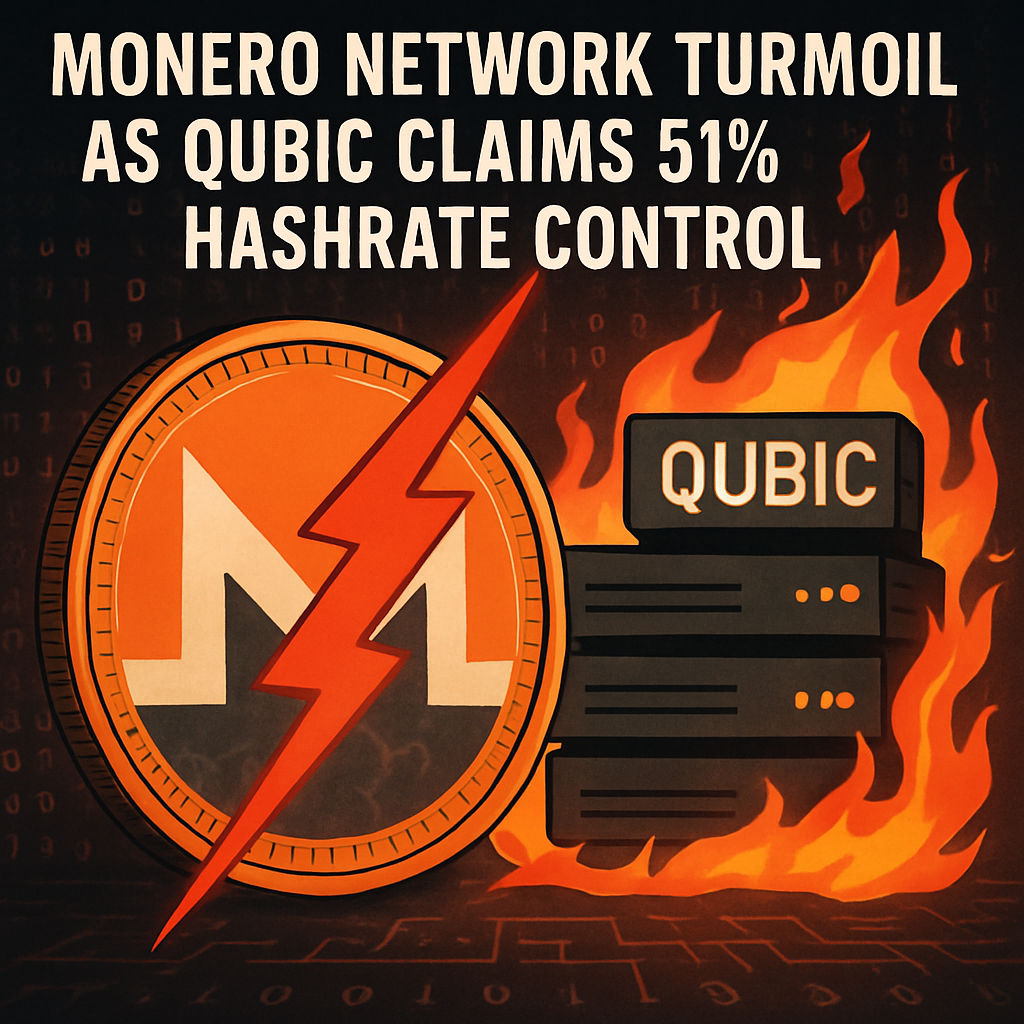Background
Anon‐custodial privacy coin Monero faced unprecedented network disruption when Qubic, a layer-1 blockchain, announced control of over 51% of its hashrate. The declaration prompted a deep reorganization of six recent blocks, discarding dozens of previously confirmed transactions and raising urgent security alarms across the community.
Qubic’s Useful PoW Model
The Qubic protocol employs a “useful proof-of-work” mechanism that redirects mining outputs into token-burn buybacks. By converting mined XMR into USDT and funneling proceeds into QUBIC token purchases, the network’s cumulative share of Monero hashrate swelled from under 2% in May to a claimed majority in early August.
Chain Reorganization Details
On August 11, observers detected a six-block-deep chain reorg on Monero’s RandomX-powered mainnet. This structure allowed Qubic to replace six consecutive blocks, effectively orphaning 60 prior confirmations. Such a reorg can enable double spending, censorship of transactions, and block withholding attacks.
Developer Pushback
Critical voices within Monero’s developer cohort dismissed the reorg as insufficient proof of a sustained 51% assault. Lead devs argued that short-lived orphaning events may result from chance hash spikes rather than a controlled attack, urging further analysis of network statistics and block-propagation data.
Economic Incentives
Qubic’s economic model converts Monero block rewards into stablecoins to strengthen its native token ecosystem. Critics question the long-term viability of burning QUBIC tokens funded by XMR revenues, noting potential market distortions and centralization risks.
Historical Context of 51% Attacks
Proof-of-work networks such as Ethereum Classic and Bitcoin Gold suffered successful reorganizations in 2020 and 2018 respectively, resulting in multi-million-dollar losses. Smaller chains like Verge also fell victim to hashpower concentration, underscoring persistent vulnerabilities in decentralized networks.
Community Countermeasures
In response to the attack claims, Monero stakeholders reportedly launched a distributed denial-of-service assault on Qubic’s mining pool, reducing its hash contribution by nearly 70% over several hours. Community proposals for emergency hard forks and mining algorithm changes emerged rapidly.
Price Impact
Market reaction was swift: XMR’s price declined by 8.6% within 24 hours, dropping from $272 to $248. Traders increased demand for short-dated put options, while long-term holders tightened risk management strategies.
Security Implications
The episode reignited debates over proof-of-work centralization, algorithm susceptibility, and the viability of emergency governance mechanisms. Industry experts called for enhanced on-chain monitoring and rapid-response protocols to guard against future disruptions.
Outlook
Monero’s resilience will hinge on technical upgrades, diversified mining participation, and fortified community governance. The reorg has served as a stark reminder of persistent security gaps in major privacy-focused blockchains.

Comments (0)